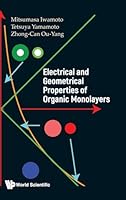
Chemical Kinetics: From Molecular Structure to Chemical Reactivity, 2nd Edition
- Length: 694 pages
- Edition: 2
- Language: English
- Publisher: Elsevier
- Publication Date: 2021-07-09
- ISBN-10: 0444640398
- ISBN-13: 9780444640390
- Sales Rank: #0 (See Top 100 Books)
https://kirkmanandjourdain.com/bli7xybd4uq https://reggaeportugal.com/a62rrqyr8 Chemical Kinetics: From Molecular Structure to Chemical Reactivity, Second Edition, explains how molecular structures change with time. It offers a comprehensive and coherent coverage of the rates of chemical transformations.
https://www.masiesdelpenedes.com/utcxxrxjp The book is written for both undergraduate chemistry students, and for the specialist. The newcomer will find the fundamental concepts, the simple experiments, and the underlying theories. For the seasoned specialist, it presents sophisticated experimental and theoretical methods, offering a panorama of time-dependent molecular phenomena connected by a new rationale. The gap between the two is bridged by a logical path that leads the reader from a phenomenological approach of molecular changes, to the formalism of chemical reaction rates, and then to state-of-the-art calculations of rate constants of the most prevalent reactions: atom transfers, catalysis, proton transfers, substitution reactions, energy transfers and electron transfers. In the process, the reader is presented with the details of collision and transition state theories. The coverage includes unimolecular reactions in the gas phase, reactions in solution and reactions on surfaces.
https://mhco.ca/3n9w3pno231 Cover image Title page Table of Contents Copyright Preface Chapter 1. Introduction Abstract 1.1 Introduction 1.2 Initial difficulties in the development of chemical kinetics in the twentieth century 1.3 Chemical kinetics: the current view References Chapter 2. Reaction rate laws Abstract 2.1 Reaction rates 2.2 Factors that influence the velocities of reactions References Chapter 3. Experimental methods Abstract 3.1 Application of conventional techniques to study reactions 3.2 Application of special techniques for fast reactions References Chapter 4. Reaction order and rate constants Abstract 4.1 Rates of elementary reactions 4.2 Rates of complex reactions 4.3 Methods for solving kinetic equations 4.4 Simplification of kinetic schemes 4.5 Global and target analysis of kinetic data References Chapter 5. Collisions and molecular dynamics Abstract 5.1 Simple collision theory 5.2 Improved collision theory 5.3 Collision cross section 5.4 Calculation of classical trajectories 5.5 PES crossings 5.6 Molecular dynamics References Chapter 6. Reactivity in thermalised systems Abstract 6.1 Transition-state theory 6.2 Semi-classical treatments 6.3 Intersecting-state model References Chapter 7. Relationships between structure and reactivity Abstract 7.1 Quadratic free-energy relationships 7.2 Linear free-energy relationships 7.3 Other kinds of relationships between structure and reactivity References Chapter 8. Unimolecular reactions Abstract 8.1 Lindemann–Christiansen mechanism 8.2 Hinshelwood’s treatment 8.3 Rice–Ramsperger–Kassel–Marcus treatment 8.4 Local random matrix theory 8.5 Energy barriers in the isomerisation of cyclopropane References Chapter 9. Elementary reactions in solution Abstract 9.1 Solvent effects on reaction rates 9.2 Effect of diffusion 9.3 Diffusion constants 9.4 Spin-statistical factors in diffusion-controlled reactions 9.5 Reaction control References Chapter 10. Reactions on surfaces Abstract 10.1 Adsorption 10.2 Adsorption isotherms 10.3 Kinetics on surfaces 10.4 Transition-state theory for reactions on surfaces 10.5 Model systems References Chapter 11. Substitution reactions Abstract 11.1 Mechanisms of substitution reactions 11.2 SN2 and SN1 reactions 11.3 Langford–Gray classification 11.4 Symmetrical methyl group transfers in the gas-phase 11.5 State correlation diagrams of Pross and Shaik 11.6 Intersecting-state model 11.7 Cross-reactions in methyl group transfers in the gas phase 11.8 Solvent effects in methyl group transfers References Chapter 12. Chain reactions Abstract 12.1 Hydrogen–bromine reaction 12.2 Reaction between molecular hydrogen and chlorine 12.3 Reaction between molecular hydrogen and iodine 12.4 Calculation of energy barriers for elementary steps in hydrogen–halogen reactions 12.5 Comparison of the mechanisms of the hydrogen–halogen reactions 12.6 Pyrolysis of hydrocarbons 12.7 Explosive reactions 12.8 Polymerisation reactions References Chapter 13. Acid–base catalysis and proton-transfer reactions Abstract 13.1 General catalytic mechanisms 13.2 General and specific acid–base catalysis 13.3 Mechanistic interpretation of the pH dependence of the rates 13.4 Catalytic activity and acid–base strength 13.5 Salt effects 13.6 Acidity functions 13.7 Hydrated proton mobility in water 13.8 Proton-transfer rates in solution 13.9 Proton-transfer model system References Chapter 14. Enzymatic catalysis Abstract 14.1 Terminology 14.2 Factors that accelerate enzymatic action 14.3 Michaelis–Menten equation 14.4 Mechanisms with two enzyme–substrate complexes 14.5 Inhibition of enzymes 14.6 Effects of pH 14.7 Temperature effects 14.8 Isomerisation of dihydroxyacetone phosphate to glyceraldehyde 3-phosphate catalysed by triose-phosphate isomerase 14.9 Hydroperoxidation of linoleic acid catalysed by soybean lipoxygenase-1 14.10 Enzymes in drug design References Chapter 15. Pharmacokinetics Abstract 15.1 Origins and current use of pharmacokinetics 15.2 Drug administration and absorption 15.3 Drug distribution 15.4 Drug metabolism and excretion 15.5 Pharmacokinetics models References Chapter 16. Transitions between electronic states Abstract 16.1 Mechanisms of energy transfer 16.2 The “Golden Rule” of quantum mechanics 16.3 Radiative and radiationless rates 16.4 Franck–Condon factors 16.5 Radiationless transition within a molecule 16.6 Triplet energy (or electron) transfer between molecules 16.7 Electronic coupling 16.8 Triplet energy transfer rates References Chapter 17. Electron-transfer reactions Abstract 17.1 Rate laws for outer-sphere electron exchanges 17.2 Theories of electron-transfer reactions 17.3 ISM and electron-transfer reactions 17.4 Non-adiabatic self-exchanges of transition-metal complexes 17.5 Electron self-exchanges of organic molecules 17.6 Inverted regions 17.7 Electron transfer at electrodes References Chapter 18. Oscillatory reactions Abstract 18.1 Non-linear systems 18.2 Chaos 18.3 Oscillatory reactions 18.4 The Coimbrator References Appendix 1. General data Appendix 2. Statistical thermodynamics Appendix 3. Parameters employed in ISM calculations Appendix 4. Semi-classical interacting state model A4.1 Vibrationally adiabatic path A4.2 Tunnelling corrections A4.3 Semi-classical rate constants Appendix 5. The Lippincott–Schroeder potential A5.1 Lippincott–Schroeder potential A5.2 The LS–ISM reaction path A5.3 Rate constants for proton transfer along a H bond Appendix 6. Quantum-mechanical radiationless transition theory A6.1 The strong coupling limit A6.2 The weak coupling limit A6.3 Energy and electron-transfer rates Appendix 7. Problems Answers Index
source 1. Disable the https://musicboxcle.com/2025/04/db3c4lanyef AdBlock plugin. Otherwise, you may not get any links.
Tramadol Purchase Online 2. Solve the CAPTCHA.
https://faroutpodcast.com/05y4yl8mqn 3. Click download link.
https://etxflooring.com/2025/04/btmklc07o 4. Lead to download server to download.





